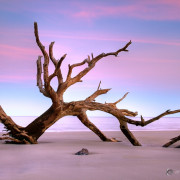Beginners Guide to Simplifying Nature Photography Compositions
Do your nature photos feel cluttered or overwhelming? You’re not alone. Simplifying a nature photography composition can be challenging because there is no single cookie-cutter approach that works in every situation. Every scene in nature is different, and conditions shift quickly. However, with a clear understanding of composition techniques—and a bit of practice—you can create stunning, visually impactful images that connect with your viewers instantly.
Simplification in landscape and macro photography is one of the most valuable skills you can learn. When you reduce distractions and emphasize your subject through thoughtful composition, your images become more powerful, more memorable, and more emotionally engaging.
This detailed guide walks you through how to simplify nature photography compositions using camera techniques, visual design principles, and post-processing tools. Whether you’re photographing deserts, forests, seascapes, waterfalls, or intimate scenes, these strategies will help you create cleaner, more compelling photos every time you’re in the field.
What Is Simplification in Nature Photography?
Before we explore how to simplify your composition, it’s important to understand what simplification actually means. A simplified nature photo is:
- Visually clear
- Free of unnecessary distractions
- Organized in a way that the subject immediately stands out from the background
A simple photo is easier for our brains to interpret. The human mind naturally prioritizes order, patterns, and clarity. When your composition reflects these tendencies—through organized elements, limited distractions, and strong structure—your viewer instantly understands where to look and what the image is about.
Simplification benefits nature photography by:
- Increasing visual impact
- Enhancing emotional appeal
- Improving storytelling
- Allowing the viewer to appreciate details like texture, mood, and color
- Making your subject more prominent and meaningful
When done well, simplification doesn’t remove the beauty of the natural world—it elevates it. By mastering this skill, you’ll create images that feel intentional, immersive, and artistically refined.
Learn to Organize Your Nature Photography Composition
Many photographers rely heavily on traditional rules of composition such as the rule of thirds, leading lines, or framing. While these tools improve aesthetics, they do not necessarily make your photo simpler. To simplify a nature photography composition, you must understand how the human brain organizes visual information.
This is where Gestalt principles come into play.
Gestalt principles—such as similarity, proximity, continuity, and common fate—describe how we naturally group visual elements and recognize patterns. Applying these principles allows you to structure a scene so that the subject and supporting elements work together harmoniously.
Example: Unorganized vs. Organized Elements
In Image #1, the shapes and lines appear random, creating a chaotic composition with no focal point. But in Image #2, the same elements are arranged using similarity and grouping to create a sun shape with an eagle at the center. The difference is dramatic: one image feels scattered and confusing, while the other is orderly, recognizable, and visually appealing.
This transformation highlights a crucial truth: organization creates simplicity.
Practical Example in the Field
In this landscape photo from Grand Staircase-Escalante National Monument, the scene contains hundreds of small details. Yet the final image feels clean and structured.
Why? Because the compositional elements are grouped into clear categories:
- Windows at the top
- Parallel lines in the middle
- A strong leading line at the bottom
By arranging similar objects close together, your brain quickly categorizes them, making the image feel naturally organized—even when the landscape itself is visually complex.
You can apply the same approach by using:
- Proximity
- Continuity
- Similarity
- Common direction
- Patterns
These principles help you group shapes, colors, and textures to create a more harmonious and simplified composition.
Use Camera Settings to Highlight Your Subject
Your camera settings are powerful tools for minimizing distractions and improving clarity in your photos. Both aperture and shutter speed can help you simplify a nature composition.
Use Shallow Depth of Field to Separate Subject from Background
A wide aperture (such as f/2.8 or f/4) creates a shallow depth of field, blurring the background and making your subject stand out sharply. This is especially useful for:
- Flower photography
- Wildlife
- Abstract nature shots
- Close-ups in chaotic environments
This simple adjustment allows you to reduce visual noise and direct the viewer’s focus exactly where you want it.
Use Shutter Speed to Simplify Motion
Long exposures can dramatically simplify a composition by smoothing textures such as water or clouds.
In the image above, floating vegetation created dark streaks across the ocean surface—an unwanted distraction. Using an 8-stop neutral density filter and a 53-second exposure, the motion of the water was smoothed, eliminating the streaks entirely. This resulted in a clean, minimalist scene with a clear focal point.
Use a Telephoto Lens to Compress and Simplify
Camera lenses also play an important role in reducing complexity.
A telephoto lens:
- Removes unwanted elements from the frame
- Compresses distances
- Helps isolate patterns
- Draws attention to a strong subject
For example, Jay Patel used a focal length of 110 mm to focus on intricate textures at Seljalandsfoss in Iceland.
By zooming in, the chaotic surroundings disappear, leaving only the most compelling part of the scene.
Use Local Adjustments in Photoshop and Lightroom
Post-processing is essential for perfecting your composition. Simplification doesn’t end in the field—it continues during editing.
Crop to Remove Distractions
One of the most effective nature photography tips for beginners is to practice cropping. Nature does not always present itself in a perfect 3×2 ratio. When this aspect ratio feels restrictive:
- Try 4×5 for more balanced verticals
- Try 16×9 for panoramic landscapes
- Or create your own custom crop
Add Panoramas to Highlight Your Subject
For example, Jay created a four-image panorama to showcase an Icelandic volcanic crater:
This custom composition emphasized the scale and power of the volcano better than a standard frame could.
Use Local Adjustments for Precision Simplification
Tools like Lightroom masks and Photoshop layers help you:
- Reduce background contrast
- De-emphasize textures
- Adjust color to separate subject from background
- Apply blur selectively
- Control brightness around key elements

Photoshop Layers and Masks used to reduce textures and contrast in the background, Kootenay National Park, British Columbia, Canada by Jay Patel
By reducing background detail in the photo above from the Kootenay National Park in Canada, the attention shifts entirely to the tall hoodoo. The image becomes stronger, cleaner, and more professional.
Combining Techniques for Maximum Impact
Most of the time, a single technique isn’t enough to simplify a nature photo. The real magic happens when multiple methods work together.

Photoshop Layers and Masks used to reduce textures and contrast in the wall behind the large hoodoo, Wahweap Hoodoos, Grand Staircase-Escalante, Utah by Jay Patel
In the White Hoodoos example, Jay:
- Used a telephoto lens to unify background textures
- Changed shooting position to hide distractions
- Adjusted light and detail in post-processing
- Enhanced subject separation with local adjustments
This combination allowed the brain to interpret the background as a single texture, making the subject pop with incredible clarity.
Simplification Is a Workflow, Not a Step
Simplifying your nature photography composition isn’t something you do at just one stage—it’s a workflow that spans:
- Pre-visualization
- In-field composition
- Camera technique
- Post-processing refinement
When you plan with simplification in mind, every decision becomes intentional—from choosing your lens to selecting your foreground to shaping your final image in Lightroom or Photoshop.
Conclusion: Let Simplicity Transform Your Nature Photography
Simplifying your nature photography isn’t simply about removing elements—it’s about creating intentional, meaningful compositions where every element serves a purpose. Simplification helps you:
- Reduce distractions
- Amplify your subject
- Improve image clarity
- Create visual impact
- Strengthen storytelling
- Produce engaging, professional-quality photos
Using Gestalt principles, camera settings, lens choice, and post-processing tools, you can consistently simplify even the most chaotic natural environments. The more you practice, the more naturally you’ll recognize patterns, organize visual elements, and refine scenes to create beautiful, clean, and compelling compositions.
So head into the wild and experiment with these nature photography composition techniques. Over time, you’ll learn to identify what truly matters in a scene—and let simplicity transform your photos into powerful works of art.














